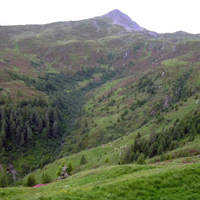Environmental and management drivers of alpine grassland vegetation types

Accepted: 5 May 2020
HTML: 79
All claims expressed in this article are solely those of the authors and do not necessarily represent those of their affiliated organizations, or those of the publisher, the editors and the reviewers. Any product that may be evaluated in this article or claim that may be made by its manufacturer is not guaranteed or endorsed by the publisher.
Current vegetation of alpine grasslands has been shaped by the combination of natural ecological factors (such as climate, soil, topography) and human activities, mainly represented by animal grazing and agricultural practices. An assessment of these factors can explain the present composition of plant communities and help to evaluate the future development of rangeland vegetation. Nowadays, the analysis of the botanical composition of grasslands is of a major importance in order to propose appropriate management plans for the sustainable exploitation of pastoral resources and their future conservation. The main purpose of this work was to assess the relevance of ecological and management factors in alpine grasslands in an area located in eastern Italy, currently used for extensive grazing, and to describe the main factors that affect the characteristics of pasture types. To this aim, about 900 ha of alpine grasslands were surveyed in Val Visdende (northern Veneto, province of Belluno, Italy) by means of 189 linear transects. Some environmental variables (altitude, slope, aspect) and factors related to management (pastoral value, animal excreta, distance from night barns) were collected for each botanical transect. Landolt indicators were calculated in order to evaluate the ecological space occupied by each type. This assessment made it possible to identify the most relevant grassland communities (namely nutrient poor, shrub encroached, nutrient rich and humid pastures) occurring in the studied area, the effectiveness of ecological indicators to describe and to differentiate vegetation groups and the effect of animal management and ecological factors in the discrimination of grassland types.
Highlights
- This research work led to proper identification of the different types of grassland occurring in an alpine study area
- The importance of main management and ecological factors to discriminate different types of pasture was assessed
- Landolt indicators are an efficient and synthetic tool to describe the relationships between environmental factors and alpine plant communities
- The information collected on the interaction among different types of grassland can support activities aimed at a sustainable management and conservation of these alpine herbaceous resources
How to Cite
PAGEPress has chosen to apply the Creative Commons Attribution NonCommercial 4.0 International License (CC BY-NC 4.0) to all manuscripts to be published.

 https://doi.org/10.4081/ija.2020.1600
https://doi.org/10.4081/ija.2020.1600



